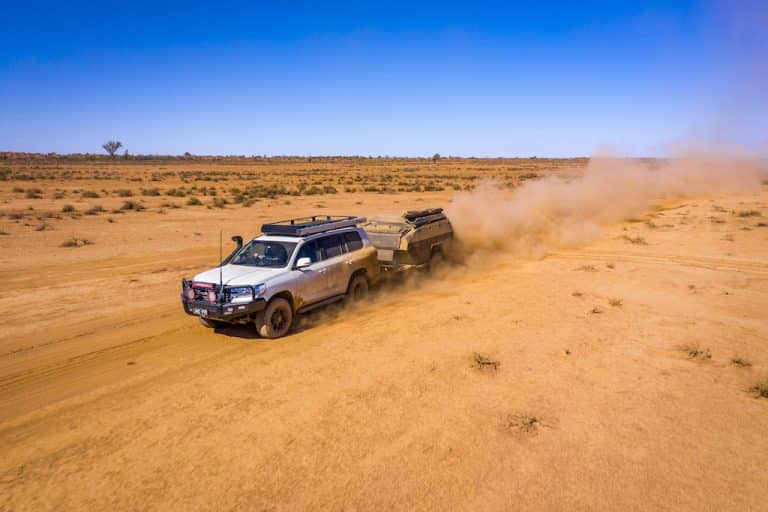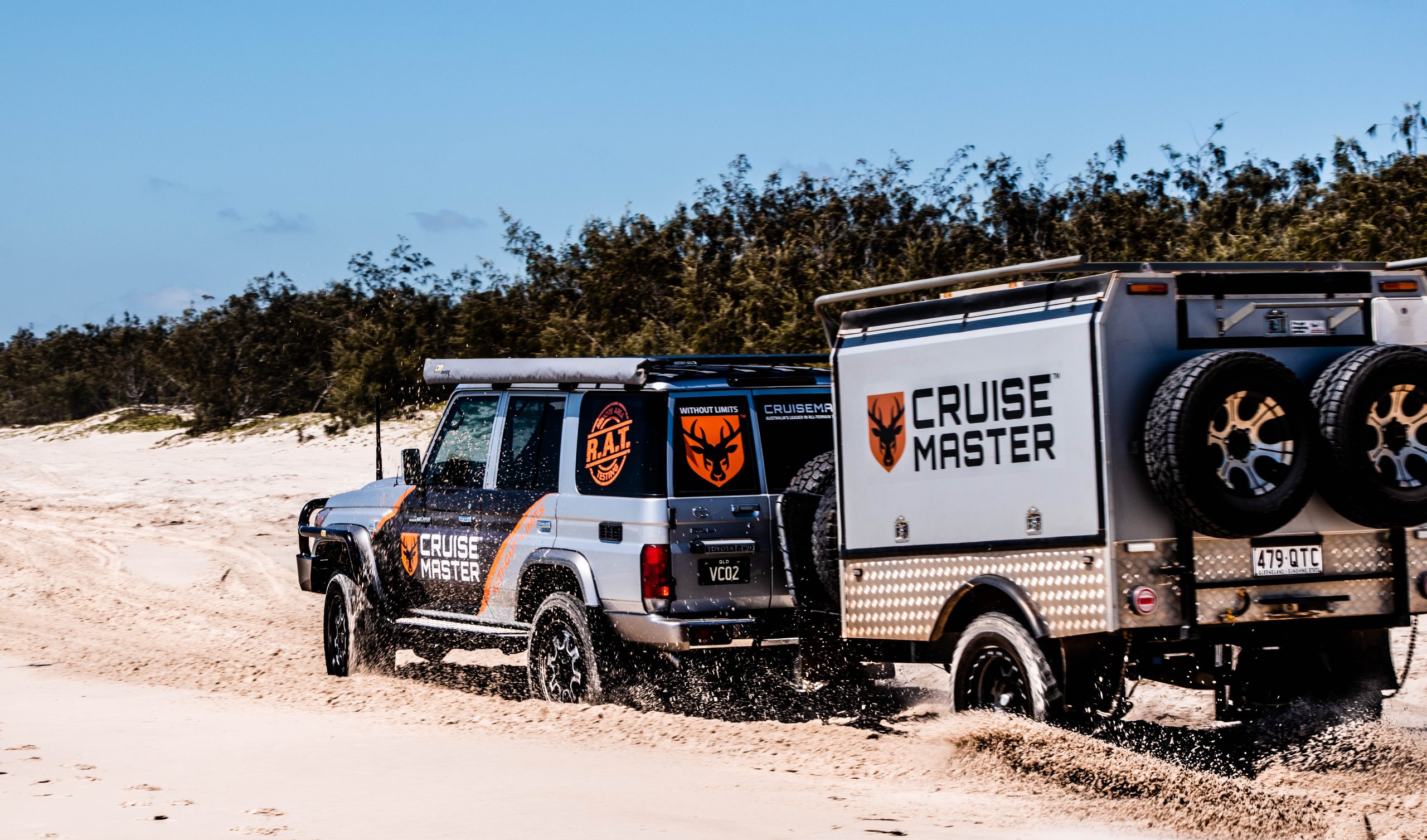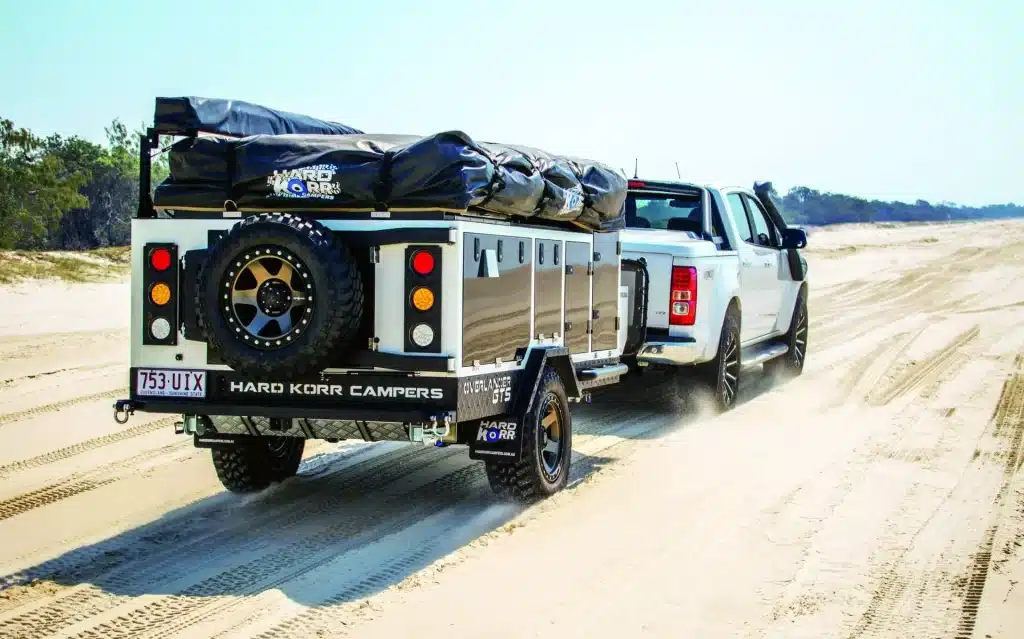Tyre pressure guide: what you need to know for a great offroad trip




Dave Darmody, owner and lead trainer of Australian Offroad Academy shares the what, why and how of tyre pressure in this handy guide for your next offroad trip.
Cool truck you have there…nice. Quick question, does your compressor hose reach the van tyres?
Have you ever pulled up beside a logging truck and noticed that there’s this weird hose thing running over the top of the tyre and into the hub? That’s their central tyre inflation system. It’s pretty rare to see a logging truck on the beach, so what’s with the tyre pressure thing?
Well, keep reading to learn all about that ‘tyre pressure thing’ in this handy guide.

You see, the most valuable piece of real estate you can own when in a car are the four contact patches with the ground. These really are the final determinator of your vehicle’s performance and safety. You can have all the horsepower and torque in the world but without the right amount of rubber on the road, you’ll just be spinning wheels.
Your vehicle manufacturer has given you a guide on the best standard tyres for your 4WD and has literally stuck this to your car for your handy reference. Your tyre placard is located in the driver’s door jam and may even offer a guide on laden and unladen pressures. Despite what ‘someone on Facebook’ says, your vehicle manufacturer knows a thing or two about the car they built.
Following on from this, if your manufacturer’s guide is to recommend a different tyre pressure for carrying a load or just the kids to school, then it follows that there is likely to be some wisdom in dropping your tyre pressures for different surfaces and conditions.

Sand jumps to mind in this example. If we take a given weight (you do know your weights right?) onto a soft surface, it’s going to have a desire to ‘sink’. If we can take that same weight and distribute it over a bunch of larger, matching footprints then that mass on those contact patches is more likely to sit on top of the sand rather than sink in. We discuss tyre pressures when towing a bit further in ‘Five things to get right for towing on sand.’
If you’re out playing in the sticks and the rocks you’ll likely experience a massive traction benefit from a significant reduction in tyre pressure. Even the chunkiest, toughest, loudest tyres should have some pressure dropped out. Don’t forget about the non-driving wheels on your van or trailer as well. Why? The trailer’s ability to follow your vehicle is helped by its tyres wrapping around the terrain rather than bouncing off of it.
Corrugations anyone? Dropping some air out of your tyres (both on the car and trailer) will make for a more comfortable ride. Not to mention your adhesion to corrugated, rocky and stony roads. Making your tyre do a bit more work in soaking up the surface irregularities takes a load off the suspension and all of those moving parts. This will keep it a bit cooler and working at its prime for longer.
By having a soft, more compliant tyre, you’re ensuring that there is literally more tyre touching the ground on each and every lump and bump. You’ll have tyres touching on the up, over the top and even down the other side of the corrugation, rather than just skimming across the top. The often-heard advice suggesting that you speed up and find the ‘sweet spot’ with corrugations is actually pretty bad advice and pretty much assumes that you don’t plan on doing any steering or braking.

All of the reasons to lower your tyre pressure in this guide applies to both the driving and trailing wheels. Trust me, the eggs packed away in the camper will thank you for dropping your pressures on that corrugated track.
Yeah, I know, you’re in a hurry, and dropping pressures and re-inflating takes time. But so does replacing a flat tyre and repairing all of the cabinets inside the van you’ve just tortured for a day.
Now, I’m not going to throw specific numbers at you in this tyre pressure guide because there is not a one size fits all approach. Every situation and set of conditions requires you to put some thought and care into your choices. However, I will suggest some percentage ranges.
Please understand that this is based on a reduction from what you have found to be appropriate highway pressures.
If you’re not towing, at least a 25% reduction, maybe as far as 50% for your whole beach trip. Bear in mind you might be down to single digits for particularly challenging obstacles…for just that obstacle.
If you are towing on the sand, then it’s all about the back axle of the car here. Get that set up the way you like it, then measure the footprint length and match the footprint – not the pressure – of all of the other tyres. This assumes similar-sized tyres on the trailer.

Can we start by saying that this is the domain of Light Truck construction or Rugged Terrain tyres? It really is. This is absolutely the terrain that will show up the deficiencies of your highway tyres.
Taking 50% of your highway pressure out of your tyres is an excellent starting point for truly rugged terrain. You might be lower but you do need to be mindful that too much torque or too extreme an angle could well see you peel a tyre off a rim. Let’s not do that.
So many possibilities. Let’s start with 10% if we aren’t encountering anything too rugged. But be prepared to come down to a 20%-25% reduction across all of your tyres.
When you drop your tyre pressure, you just must drop your speed. Your tyres will get hotter with less air because of the way that they flex. The faster you go, the more they flex and more often. Everything about how you drive just needs to be a bit smoother and calmer.